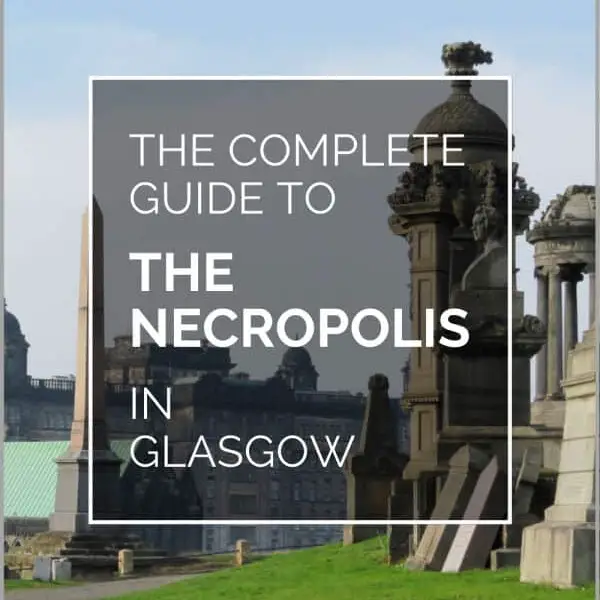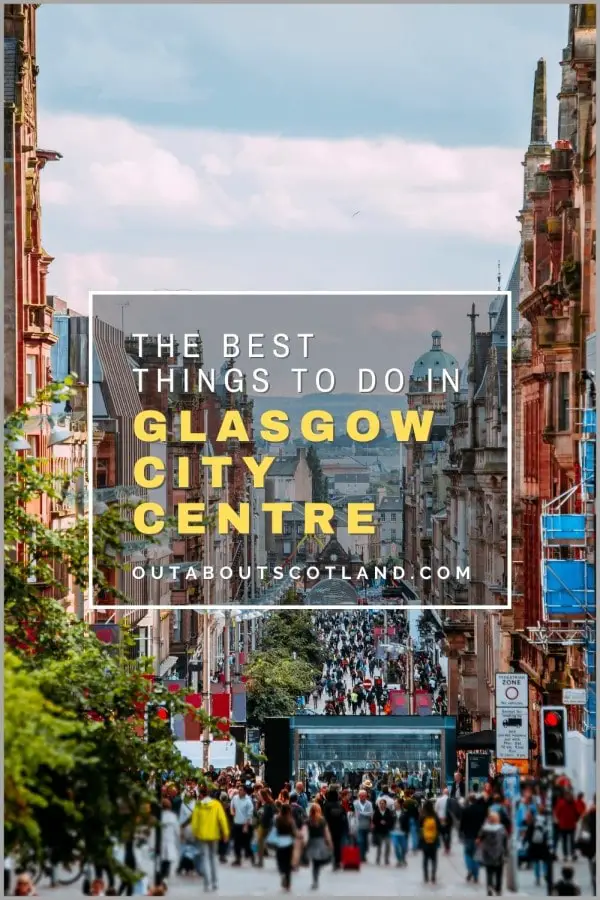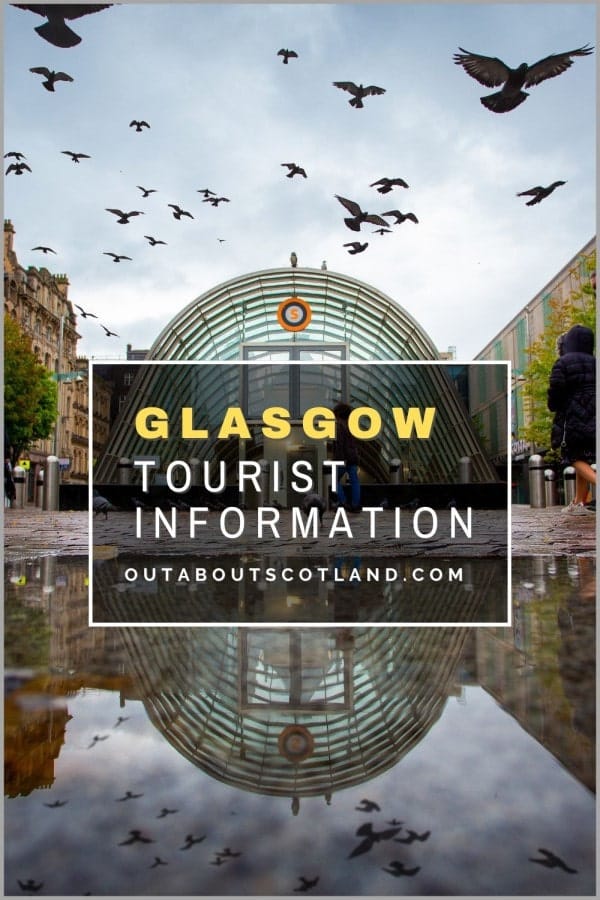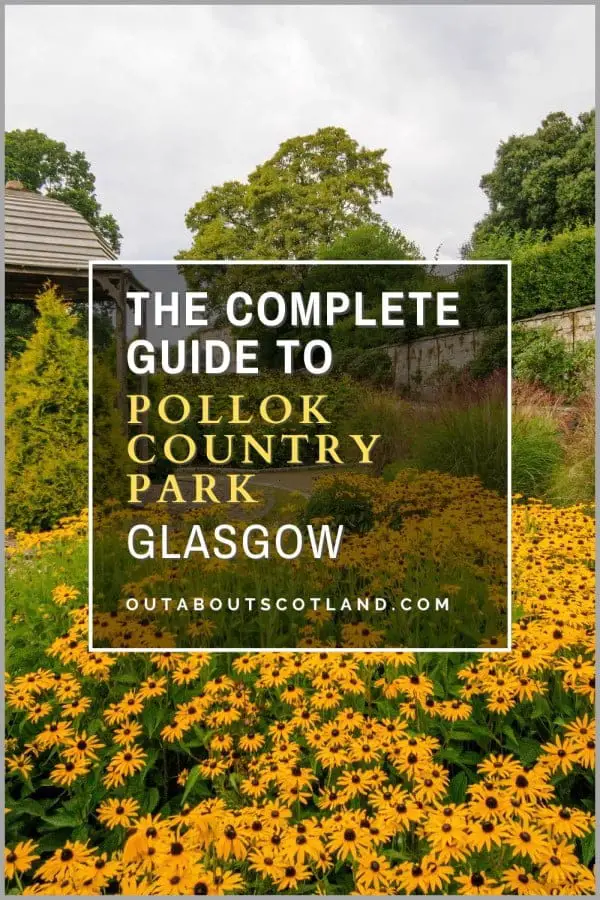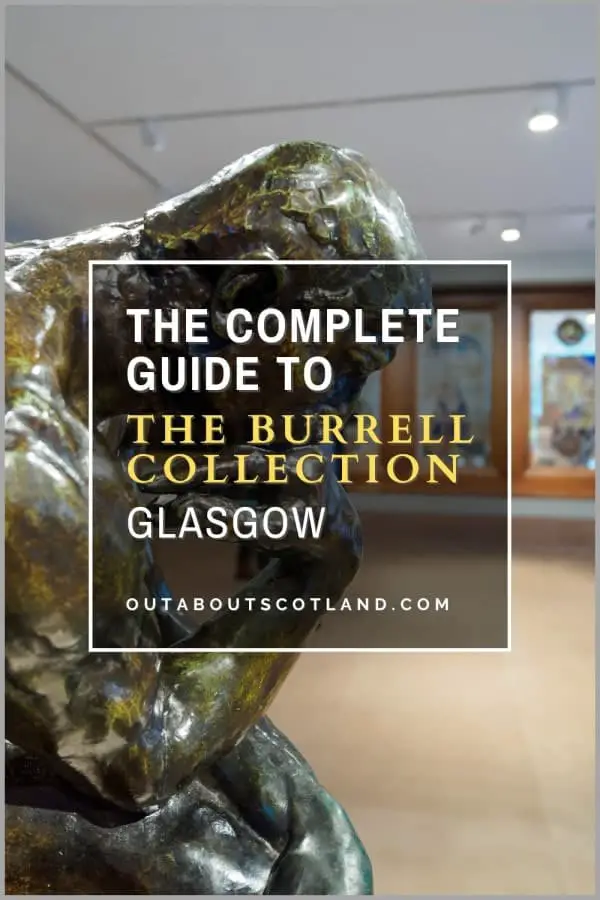The Glasgow Necropolis is a prominent Victorian garden cemetery located on a low but prominent hill to the east of Glasgow Cathedral. Often described as one of the most significant cemeteries in Europe, the Necropolis is a testament to the 19th-century trend of creating grandiose burial places for the wealthy and influential members of society.
The Necropolis is renowned for being the final resting place of more than fifty thousand people, as well as being one of the first multi-faith graveyards in the world. It’s free to visit, and guided tours are available on request.
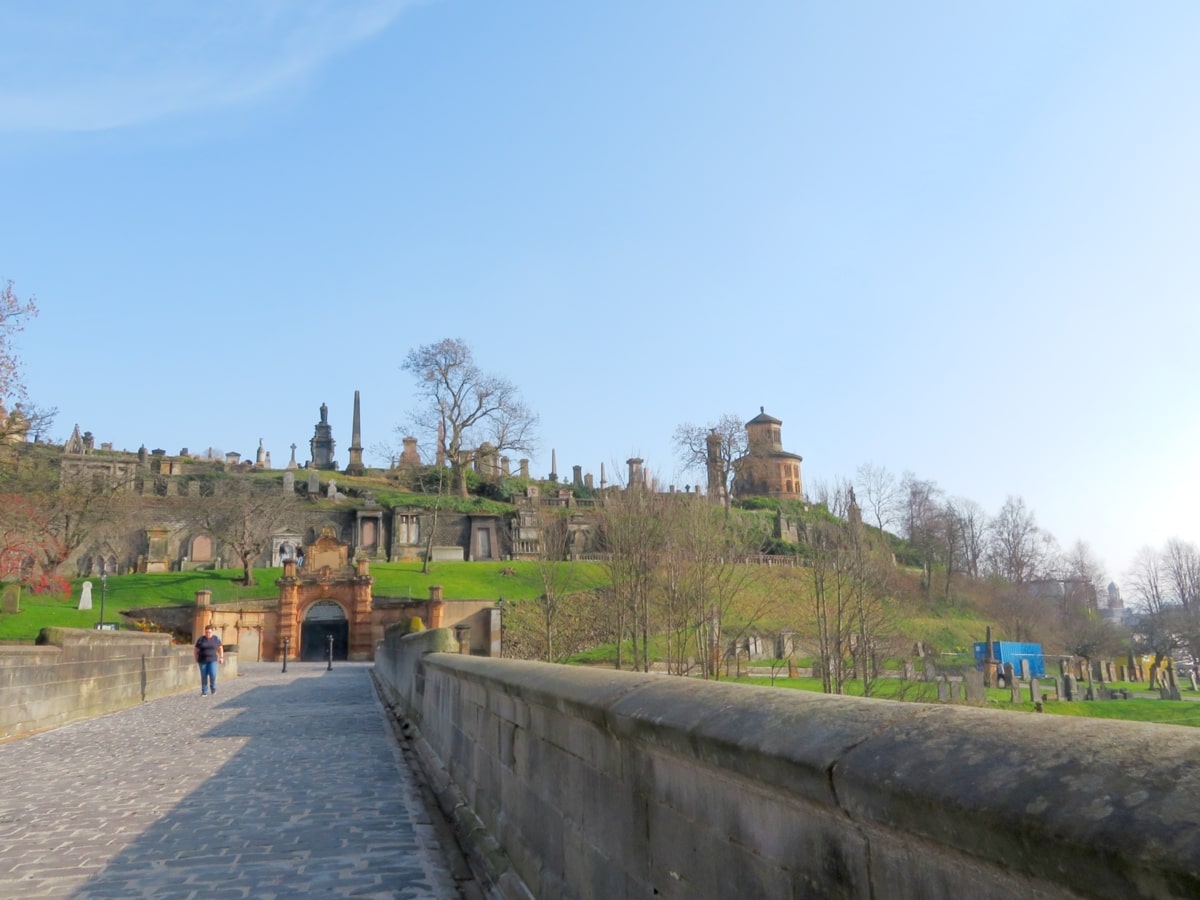
| Address: | Wishart Street, Glasgow, G4 0UZ |
| Opening Hours: | 24/7 |
| Admission Price: | Free |
| Parking: | Paid car park on Castle Street |
| Contact: | To book a tour - tours@glasgownecropolis.org |
| Facilities: | None |
| Photos: | Virtual Tour YouTube Video |
Overview
If you’re in Glasgow and looking for something to do that’s a bit out of the ordinary, you might enjoy taking a walk around the 37-acre Necropolis next to the city’s imposing cathedral. This Victorian cemetery is the final resting place for over fifty thousand Glasgow residents, and among the gravestones you’ll find memorials dedicated to some of the greatest Scots that have ever lived.
From John Knox (the founder of Scotland’s Presbyterian Church) to Charles Rennie Mackintosh (Scotland’s most famous architect), you’ll find a huge number of monuments in the Necropolis.
Like most Victorian burial sites, Glasgow’s Necropolis is laid out like an informal park, with meandering paths running throughout a vast collection of gravestones that’s reminiscent of the equally large Pere Lachaise Cemetery in Paris. While some memorials are enormous and very elaborate, there are others that are rather nondescript, and this eclectic mix of tombs lends the site an ethereal, other-worldly atmosphere.
There are around 3,500 monuments in this city of the dead, but the most famous has to be the one dedicated to John Knox which sits on top of the highest point of the graveyard. From there, you’ll get a fantastic elevated view across the city, with the cathedral in the foreground and Glasgow’s rambling streets spreading out in every direction.
The Necropolis is an incredibly atmospheric place that’s definitely worth visiting if you’re intending to view the nearby cathedral.
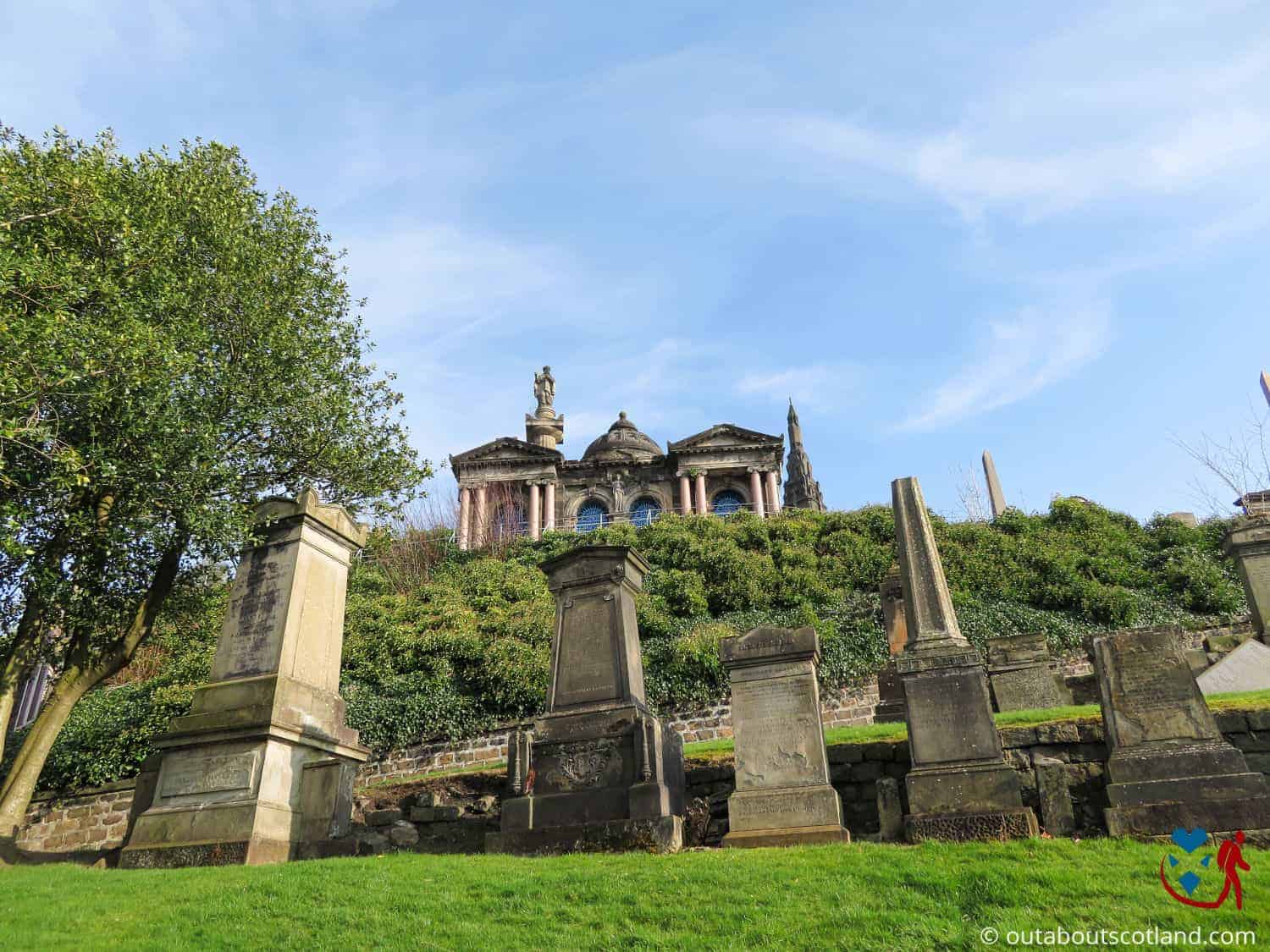
The Highlights
1: The Glasgow Necropolis is often referred to as a ‘city of the dead,’ and it features an extraordinary collection of monuments, sculptures, and mausoleums. Visitors can admire the intricate stonework and architectural styles ranging from Egyptian to Gothic and Classical, designed by notable architects and sculptors of the time.
2: Situated on a prominent hill, the Necropolis offers some of the best panoramic views of Glasgow. Visitors can enjoy sweeping vistas that include Glasgow Cathedral, the city skyline, and, on a clear day, the distant Campsie Fells.
3: Guided tours are available, providing insights into the lives of those interred, many of whom were influential figures in Glasgow’s history, including merchants, politicians, and artists. The informative tours help visitors understand the historical context and the evolution of Glasgow through the ages.
Visiting Tips
1: The Necropolis is set on a hill with uneven terrain, including cobbled paths, steep slopes, and stairs. To navigate these safely and comfortably, it’s advisable to wear sturdy shoes with good grips. This is particularly important in wet weather when the paths can become slippery.
2: The Glasgow Necropolis is not just a tourist attraction; it is a resting place for thousands of people, so visitors should be respectful of the graves and memorials. Avoid touching or leaning on the stones as many are old and may be fragile or unstable. Keep to the paths where possible and refrain from littering or causing any form of damage.
3: While the Necropolis is open to the public and you can explore on your own, you may gain more from your visit by joining a guided tour that provides fascinating insights into the history of the cemetery, the symbolism of the monuments, and the stories of the notable individuals buried there.
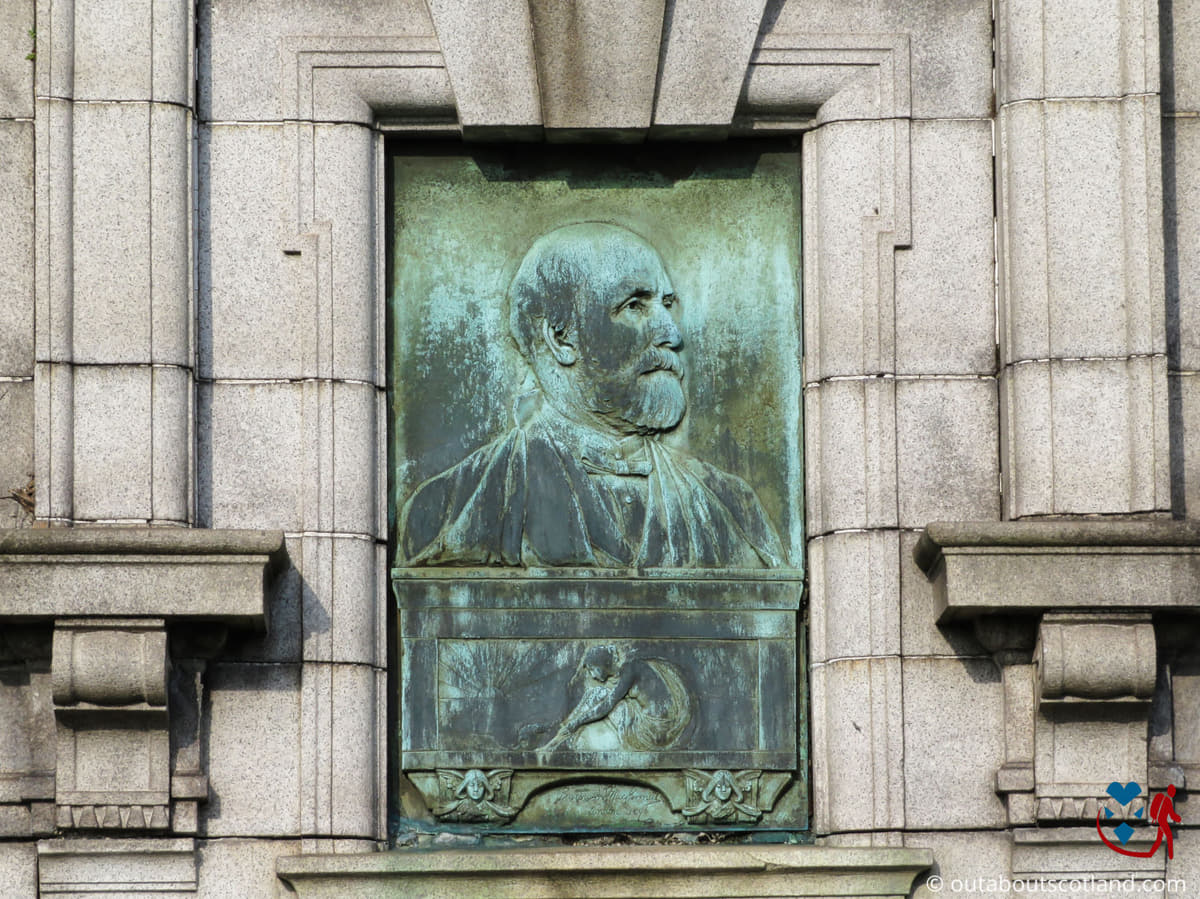
Tourist Information
The best thing about a visit to the Necropolis is losing yourself in the myriad paths that thread across the hill like an enormous spiderweb. Ornate gravestones surround you as soon as you cross the Bridge of Sighs (the bridge at the main entrance), and if you look closer, you’ll notice some incredibly detailed carvings.
The graveyard is unusual in that it’s multi-faith, and you’ll find Catholics, Quakers, Protestants, and Jews laid to rest amongst the burial plots in a design that was ahead of its time for its inclusion of different religions.
While the John Knox monument might be the first place you head to (although he’s not even buried at the Necropolis; instead, you’ll find him under the car park of St. Giles Cathedral in Edinburgh), there are many more interesting gravestones to keep an eye open for.
One of the more random memorials is the one dedicated to William Miller, the poet who penned the children’s nursery rhyme ‘Wee Willie Winkie’, while one of the most surprising has to be the grave of the very first person to be buried in the Necropolis – an 18th-century Jewish jeweller.
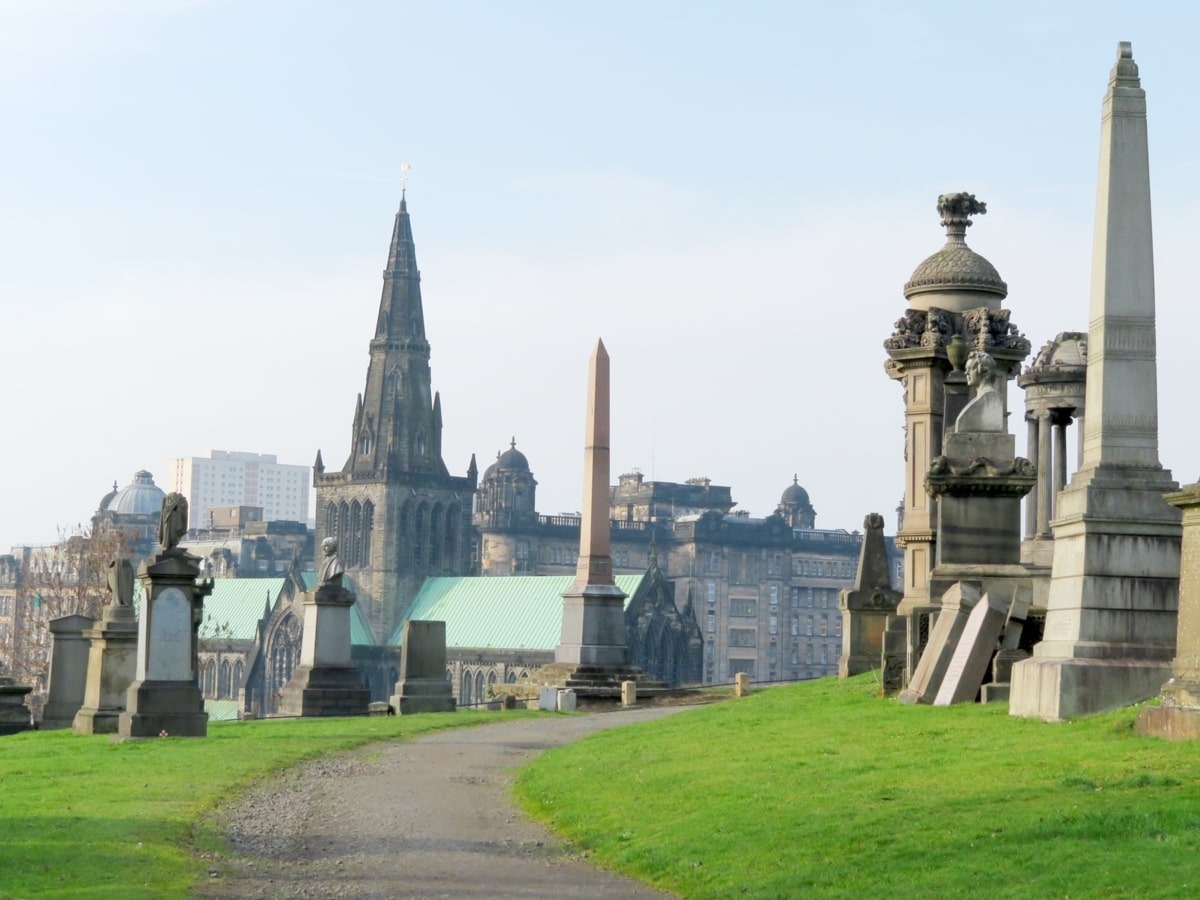
If you really want to discover the history of Glasgow’s Necropolis, you can book yourself onto a two-hour informal guided walking tour run by a group of volunteer tour guides who are extremely knowledgeable and enthusiastic about the place. They don’t ask for a fee to join the tour, but they do request voluntary donations that go towards the upkeep of the Necropolis.
Alternatively, you’re free to wander around the site at your leisure, and as the site is unmanned, it is usually open till late, although you might like to give it a miss when it’s dark for your own safety.
If you enjoy wildlife spotting, you might be interested to know that The Necropolis is Glasgow’s second-largest green space. The graveyard is full of plants and animals and there are large areas of wildflowers, trees, and ivy-covered quarry faces.
There are more than 180 different species of flowering plants and trees across the graveyard that attract insects and a variety of birds that feed on them, and you might be lucky enough to see pipistrelle bats flitting about the sky at dusk. There are also wood mice, voles, and roe deer, although the deer are usually only seen late at night.
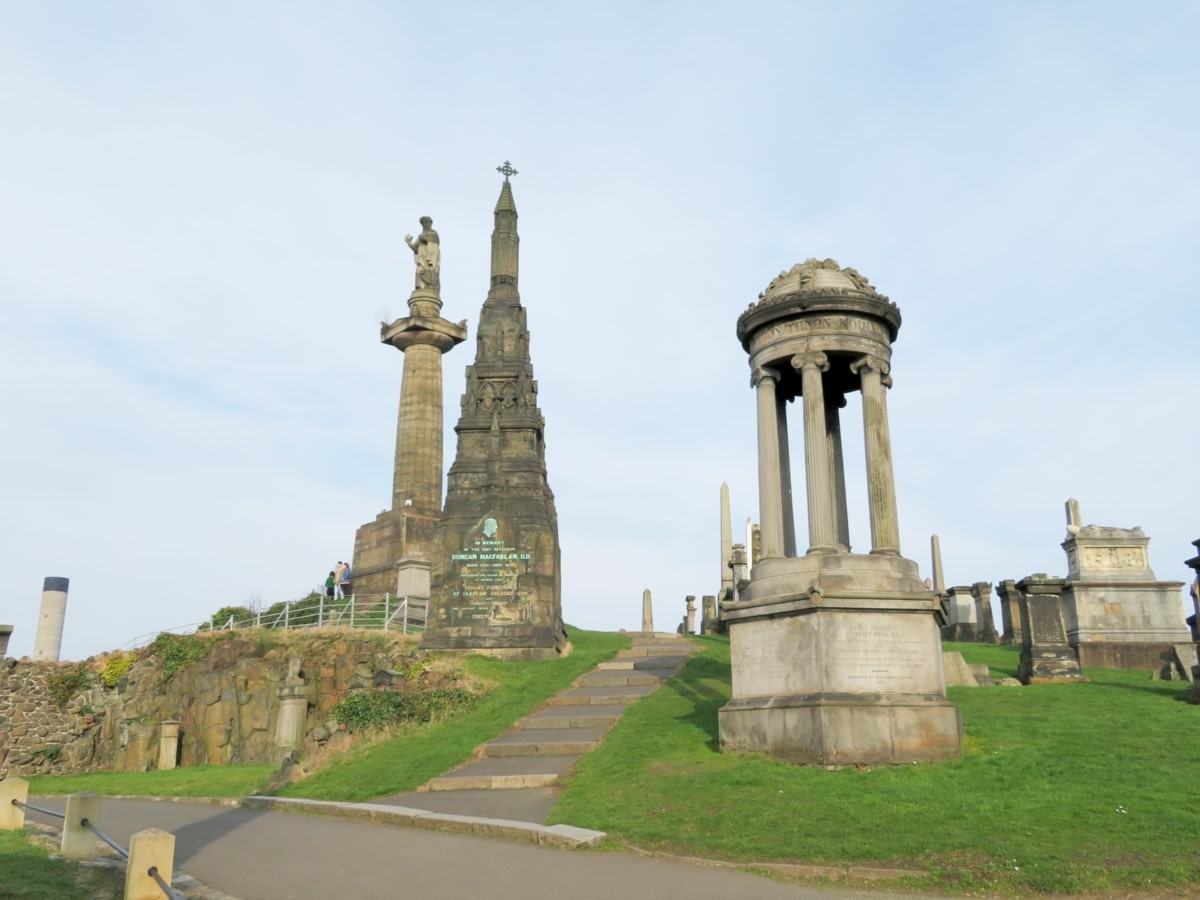
History
Prior to the Necropolis being the home of Glasgow’s dead, the site on which it’s located – known as Wester Crags – had been planted with fir trees and was used as a public park. Unfortunately, the firs struggled to survive, so in the early 1800s they were replaced with willow and elm, and the site was transformed into a Victorian arboretum.
It was around this time that the first foundation stone was laid for the John Knox monument, which is now the focal point of the entire graveyard. With the growing need to find somewhere to bury the dead of the city’s ever-expanding population, Glasgow’s city planners looked for inner-city areas to create a new graveyard, and Fir Park, the peaceful but failing Victorian arboretum, became the obvious choice.
The passing of the Cemeteries Act in 1832 meant that burial sites could be created for profit, so The Glasgow Merchants House purchased the land to develop a picturesque site that would rival the graveyards of Paris. With that thought in mind, the job of designing the Necropolis was awarded to a landscape gardener rather than an architect.
The Necropolis officially opened in 1833 as an interdenominational burial ground, but it was a full year before the first Christian burial took place. We know this because the Necropolis kept details of all burials, including age, sex, and cause of death – something that was very unusual for the time.
The ornate entrance and bridge, known as the Bridge of Sighs, was completed in 1836, with later extensions added in 1877 and 1892, plus three additional memorials installed between the entrance gate and the bridge. These memorials are dedicated to the still-born children of Glasgow, the soldiers lost in the Korean War, and the Glaswegian recipients of the Victoria Cross.
The burial grounds continued to be run privately until 1966 when The Merchant’s House handed the Necropolis over to Glasgow City Council, which now maintains it for public access.
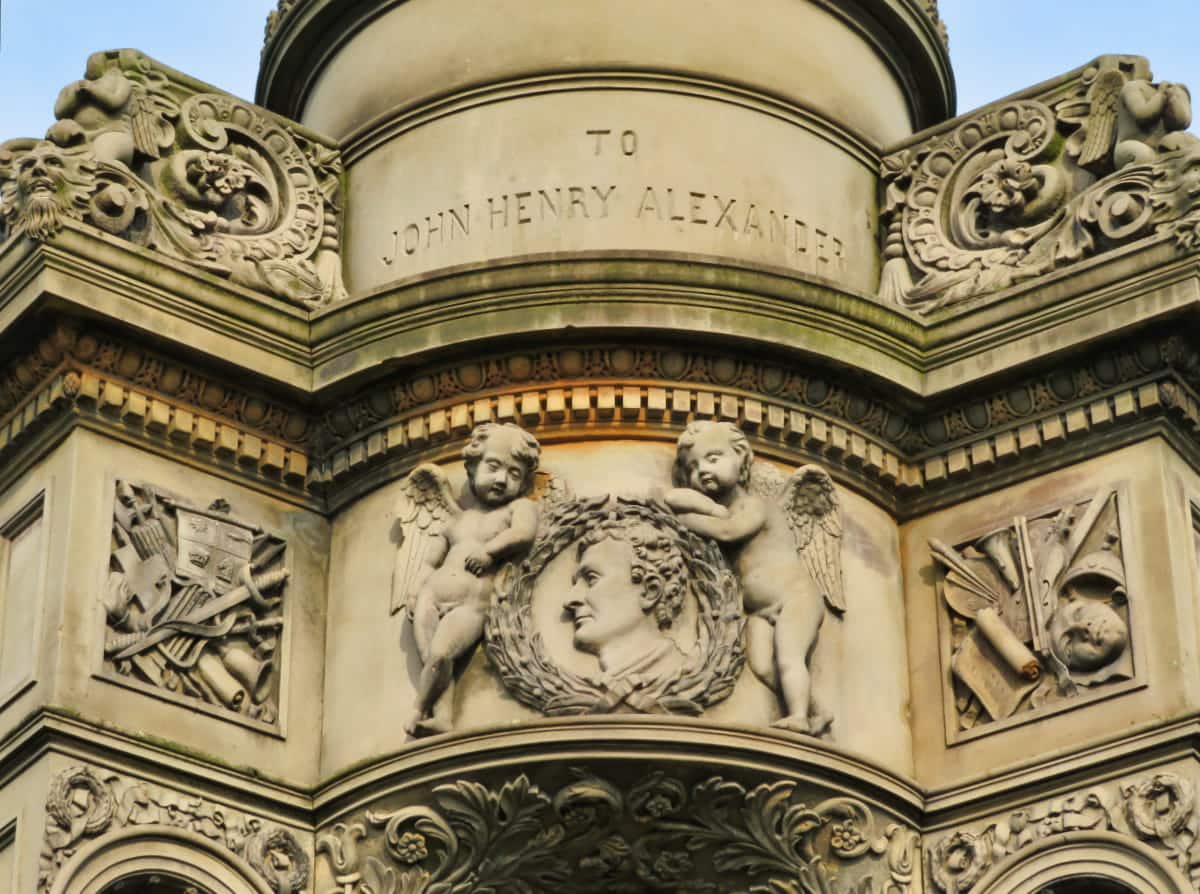
The Commonwealth War Graves
The Western Necropolis is a large cemetery complex north of Glasgow City Centre. Adjoining this site are Glasgow Lambhill and Glasgow St. Kentigern’s Cemetery, as well as The Glasgow Garnet Hill Hebrew Burial Ground and Glasgow Crematorium Memorial. Vehicle access is prohibited at all sites in the evenings, with gates closing at 5 p.m. in the winter and 6 p.m. in the summer, but pedestrian access is still possible.
History
During the two world wars, the United Kingdom became an island fortress used for training troops and launching land, sea, and air operations around the globe. There are more than 170,000 Commonwealth war graves in the UK, many of which are those of servicemen and women killed in active service or who later succumbed to wounds.
Others died in training accidents or because of sickness or disease. The graves, many of them privately owned and marked by private memorials, can be found in more than 12,000 cemeteries and churchyards.
Glasgow was one of the ports of embarkation for the British Expeditionary Force in 1914, and several military hospitals opened in the city during the First World War, including the 3rd and 4th Scottish General (1,200 beds each) and the Merryflats War Hospital (500 beds). Battalions of a number of Scottish regiments had their headquarters in Glasgow during both wars, most notably the Highland Light Infantry.
German bombers targeted the Clydeside shipyards during the Blitz, and Glasgow came under particularly ferocious attack on the night of March 13 and 14, 1941, which resulted in a large number of casualties among civilians and service members.
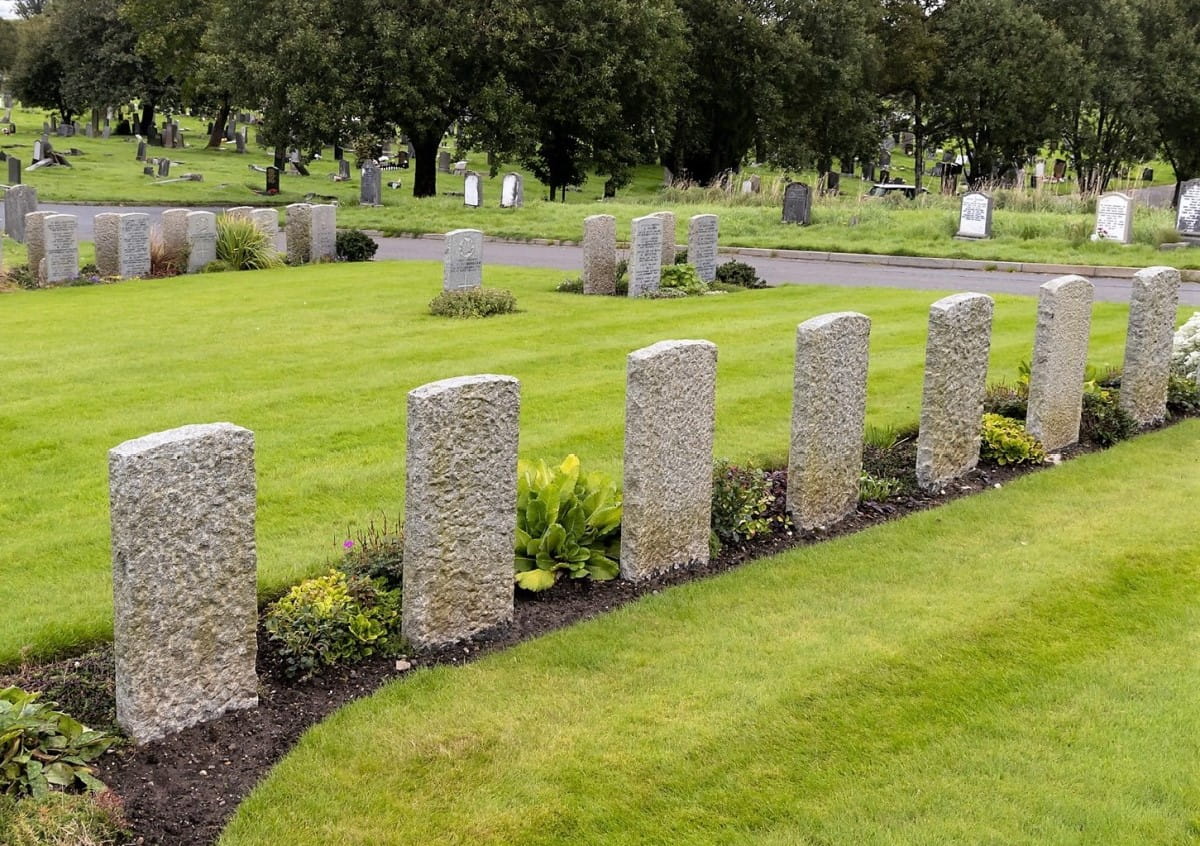
The Glasgow Western Necropolis contains 359 First World War burials, many of them grouped together in Section P, with a small group of Australian graves in Section N. A screen wall near the main entrance carries the badges of the regiments represented in Sections P and H.
The 124 Second World War burials are scattered throughout the cemetery, although there are two among the earlier war graves in Section P. Also in this group are two inter-war service burials and two German war graves.
Glasgow Crematorium stands within the Western Necropolis, and a memorial in the Garden of Rest commemorates one serviceman of the First World War and 72 of the Second World War whose remains were cremated there.
Commonwealth War Graves Location:
By road from the M8 exit at junction 16 and head north on A879 Craighall Road. Travel 2.5 miles on this road leading into Saracen Street and Balmore Road. Turn left onto Skirska Street, then second right onto Tresta Road. Through the housing estate, the entrance to Western Necropolis is on the right-hand side, past the entrance to St. Kentigern’s Cemetery at the end of the road.
By public transport, Gilhochil Rail Station is two minutes’ walk from the main cemetery entrance. Trains from Queen Street Station travelling to Anniesland stop at this station.
Information courtesy of Commonwealth War Graves.
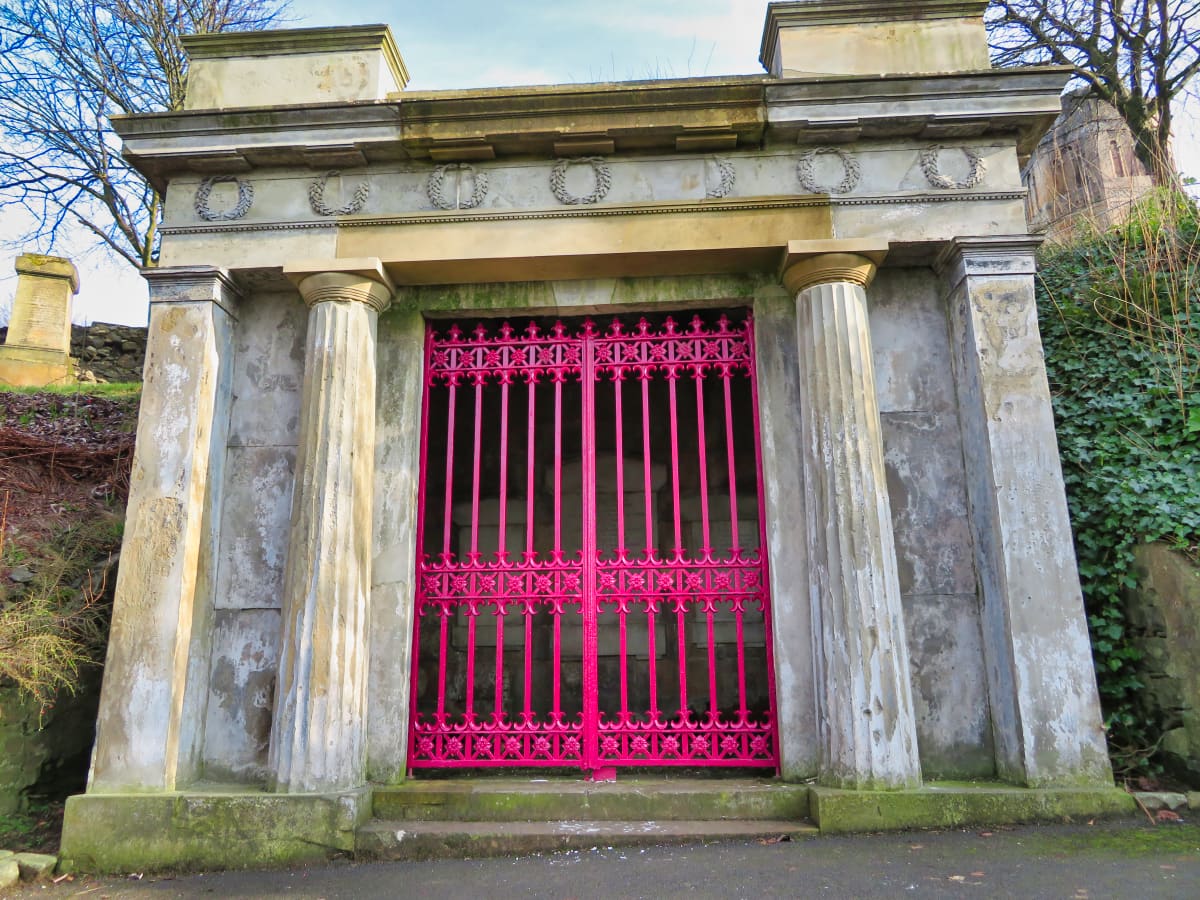
Things to Do
Historical Exploration: Delve into the rich history of Glasgow by exploring the Glasgow Necropolis. This Victorian cemetery, the burial place of more than 50,000 souls, offers a unique look into the city’s past. Admire the ornate architecture of the monuments, mausoleums, and Celtic crosses, each telling its own story of a life once lived.
Photography: Famed for its atmospheric beauty, the Glasgow Necropolis is a haven for photographers. Capture the stunning cityscape views from the top of the hill during the magical golden hour for a photo you’ll be proud to share on social media.
Guided Walking Tour: Join a guided tour to truly appreciate this historic location. Expert guides will take you around the Necropolis and share fascinating tales of the notable people interred there. Click here to see some of the tours offered by Get Your Guide.
Picnic with a View: For a unique dining experience, pack a picnic, find a spot under a tree, and enjoy your lunch with the panoramic views of Glasgow spreading out before you.
Wildlife Spotting: Despite its urban location, the Necropolis is a hotspot for wildlife. Keep an eye out for a variety of birds, squirrels, and other creatures that call this place home.
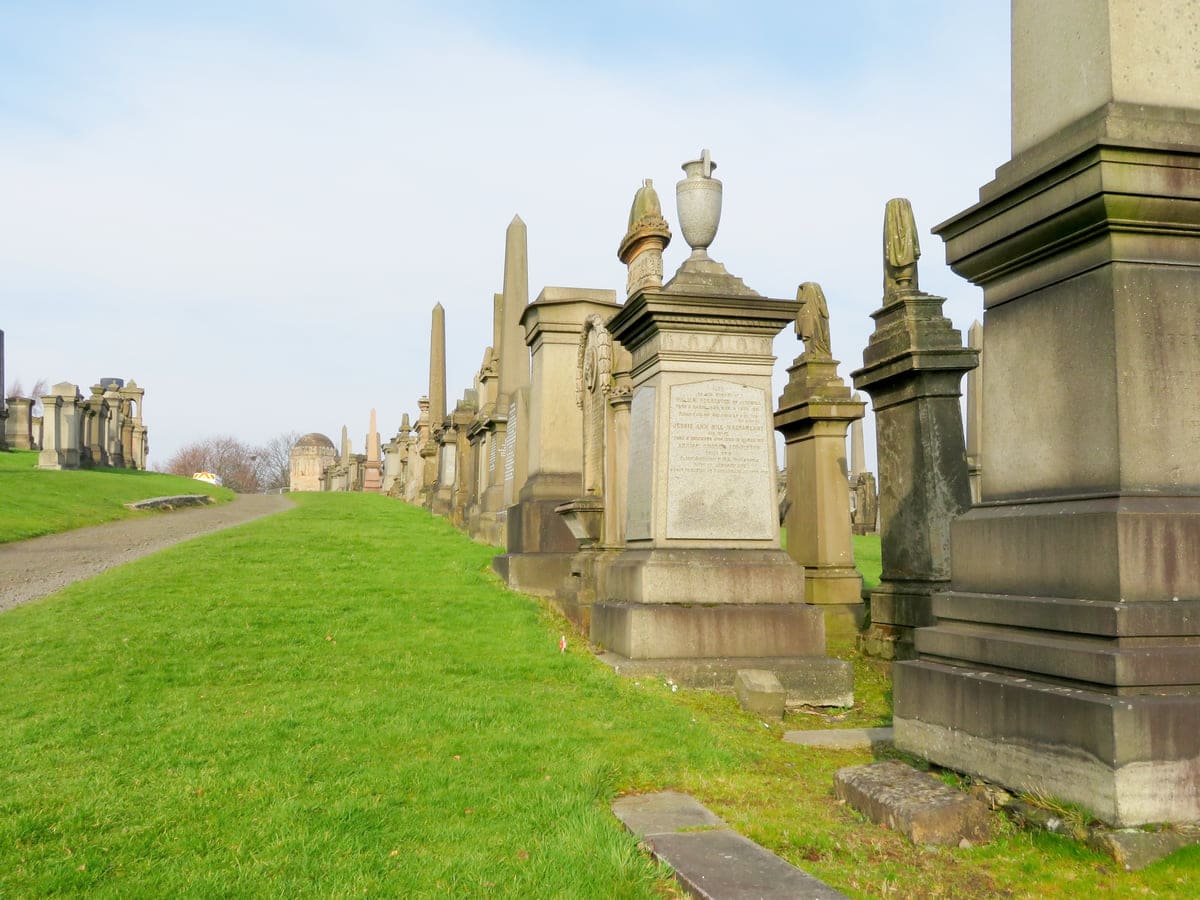
Things to Do Nearby
Glasgow Cathedral. Castle St., Glasgow, G4 0QZ. 3-minute walk.
Founded in 1197, this is one of the largest Christian buildings in Scotland. Glasgow Cathedral is notable for its underground crypt and post-war stained-glass windows. Entry is free, but donations are welcome.
George Square. Glasgow G2 1DH. 14-minute walk.
Glasgow’s principal civic square is located in the heart of the city, next to the Grand City Chambers. This historic square was laid out in 1781 and is ringed with statues of famous Scots.
St. Mungo Museum of Religious Life and Art. 2 Castle St., Glasgow, G4 0RH. 2-minute walk.
A free-to-visit museum located next to Glasgow Cathedral. This museum features a collection of religious-themed artefacts, paintings, and exhibits from all over the world. There is a café and gift shop on site.
Provand’s Lordship. 3 Castle St., Glasgow, G4 0RH. 3-minute walk.
This museum is situated inside one of only four mediaeval buildings that survive in Glasgow. Built in 1471, Provand’s Lordship is furnished with a collection of 17th-century furniture and portraits. Entry is free.
The Glasgow Police Museum. First Floor, 30 Bell St., Glasgow, G1 1LG, 13-minute walk.
This independent museum is dedicated to Britain’s first police force. There are exhibits of clothing and police memorabilia, and knowledgeable staff are on hand to answer any questions. Entry is free, but donations are welcome.
Frequently Asked Questions
Why is Glasgow Necropolis famous?
Glasgow Necropolis is famous because it’s one of the most significant cemeteries in Europe and is widely regarded as a unique representation of Victorian cemetery design.
It’s located on a low but very prominent hill to the east of Glasgow Cathedral. The Necropolis is home to around 3,500 monuments that were designed by many of the leading architects and sculptors of the time.
Is Glasgow Necropolis free?
There is no fee to enter the Glasgow Necropolis.
What is the difference between a cemetery and a necropolis?
The word ‘necropolis’ derives from the Greek nekropolis, which means ‘city of the dead’. A necropolis is a very large burial ground that is usually complete with ornate burial tombs and gravestones.
A cemetery is a simple piece of land that has been set aside for people to be buried. The land is reserved solely for that purpose and is used to memorialise the dead.
Can you walk around the Glasgow Necropolis?
Visitors are welcome to walk around and explore the Glasgow Necropolis at their leisure. The Friends of The Glasgow Necropolis organise free walking tours that explain the history of the site and the people buried there.

